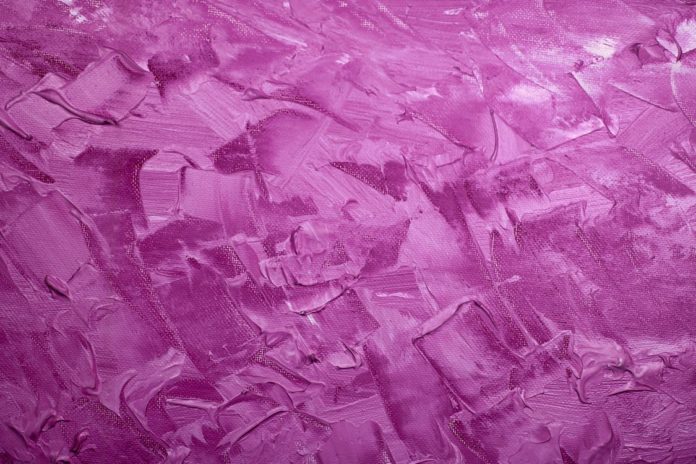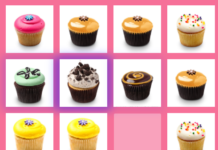Assume you would like to learn how to make purple color or purple paint. First, you’ll need to know how to blend colors! But where do you start? What two colors combine to form purple?
To learn how to produce purple, you must first grasp the science of color mixing. In this post, we’ll teach you how to make purple.
Most of us know what colors combine to get purple paint, but combining red and blue does not always provide the intended outcome. Getting a vivid, brilliant purple may be difficult.
Purple is a color that I commonly use in my paintings. I adore the hue and all of its variations. Still, it is also a convenient paint color even though you’re not a lover of purple.
Without employing black, purple may be utilized to deepen blues and reds. It also adds richness and depth to black paint, otherwise flat and drab.
When yellows and oranges are excessively bright, a small amount of purple can be utilized to silence or tone them down.
But what if Dioxazine Purple isn’t the appropriate shade of purple for your project? If you don’t have Dioxazine, how do you blend different purple tints and shades? And why does your blue-red blend produce a gray muddy hue rather than the brilliant purple you desire?
So, let’s learn more about how to make purple and what colors go with purple?
So, what does the color purple mean?
Purple is associated with elegance, prosperity, and power in color psychology. Purple, as one might imagine given its history, also denotes aristocracy and monarchy. On the other hand, purple-blue is thought to provide stability and tranquility. When mixed with red, it is connected with wisdom and intelligence.
What Two Colors Make Purple
Red + Blue = Purple
Purple may be created by combining blue and red. The quantity of blue and red in your combination will decide the exact hue of purple. More red is poured into purple to make it redder, and more blue is adjusted to make it bluer.
Purple’s actual colors are blue and red, but various additional colors may be mixed in to produce distinct tints. It will become lighter if you add white, yellow, or gray to your red and blue combination. You may darken your purple by mixing black into your blue and red blend.
As a result, purple may be defined as any color with a tint between red and blue. Combining these two hues yields purple, but there is a technique to achieving the precise shade. The color theory comes into play here! You will be able to manufacture purple yourself once you learn the science behind it.
A Short History of the Purple Color: The Royalty Color
Colors have been a part of human society since people first crushed up various berries to create the first colors. As a result, color is much more than a set of lightwave frequencies. Every hue has an amalgam of historical and cultural importance. We feel that knowing this history infuses it into your works of art. For example, purple pigments are rare and expensive, making them a favored hue of royalty throughout history.
How to make shades of purple?
Overall, Ultramarine Blue produces a dark purple, whereas purple coupled with Cobalt Blue produces a softer purple. Purple combined with Alizarin Crimson will likewise have a somewhat colder color temperature than purple mixed with blue and Cadmium Red. Purples can also be blended with other reds outside those listed above, such as Burnt Siena, Vermillion, and Quinacridone Red.
Yellow and purple for subdued purple tones
When combined with Provence Violet Bluish or Dioxazine Purple, Yellow Ochre produces a more earth tone purple than when used with Cadmium Yellow. In addition, of course, the subdued purple created with Provence Violet Bluish is lighter than when blended with Dioxazine Purple.
You are not limited to the hues listed in the color chart for generating a muted purple. You may use several shades of purple that you create yourself and then combine them with whichever yellow you choose. Cadmium Lime Yellow, Hansa Yellow, and any other yellow you have on hand are other alternatives for yellows.
How to make purple paint?
My favorite combination for a brilliant purple is Ultramarine Blue (warm) and Quinacridone Magenta (cool). You may also use Alizarin Crimson (cool) and Ultramarine Blue, or Permanent Rose (cool) and Ultramarine Blue. Still, Quinacridone Magenta produces the most vibrant purple. (See graph below) To make the brightest purple, combine these colors in equal proportions. (Colors seen on a computer screen are not always correct)
What Other Colors Can you make with purple?
What colors combine to form purple? It turns out that you can create a wide range of purple hues. The hues of purple you’ll obtain are determined by the colors you start with and how you combine them!
To make considerably distinct colors of purple, combine blue and red with white, black, or gray. Take a look at these sample swatches to help you mix the right purple hue!
Making Cooler Purple Colors
The most straightforward technique to tone down your purple hue is to add additional blue. If you adopt this strategy, the most essential consideration is which blue to choose. It is always preferable to utilize the same blue to make the original purple color. In addition, it must be a warm blue. Otherwise, your purple shade will become muddy.
It’s also a good idea to only add a little blue to your purple at a time. A tiny quantity of paint may radically alter the hue. If you apply too much blue too soon, you may need to add additional red to restore it to its original tone.
Making Purple Colors That Are Warmer
It may seem apparent today, but the easiest method to get a warmer purple is to add a bit more red. You should certainly use the same red you used to generate your foundation purple, but it should be a colder red, or your purple will turn muddy. Similarly, if you mix red with the purple shade, begin with a small quantity and gradually increase until you are satisfied with the color.
How to Make a Dark or Light Purple
If you’re using paint, you may darken the color by adding black. Then, add white to produce a lighter shade. To make the color darker, add black food coloring. To soften, use the same amount of red to blue as before, but less of it. Similarly, apply more to achieve a deeper and more vibrant hue.
Are you wondering what colors go with purple? Don’t worry. Here are a couple complimentary colors to purple.
Emerald
Purple and green may appear to be too eclectic for some. Still, in truth, this combination may be a winning option in a more conventional environment. For example, a purple formal living room makes a statement without deviating too far from the norm. (We guarantee you can enjoy ginger jars without decorating a full blue and white room around them!)
Black and white
Black and white rooms are elegant, but this traditional color combination also looks gorgeous when combined with purple furniture—who knew? The classic colors bring a welcome touch of contemporary to this dining room. The finished product will have your dinner party attendees talking.
Silver
Purple is a regal hue in and of itself, and adding silvery embellishments that remind you of your favorite dazzling jewelry will keep the opulent vibe continuing. However, a home with this theme demonstrates that purple isn’t just for children’s bedrooms—adults may include the color in their sleeping areas. To avoid overwhelming a space, the idea is to pick a more subdued color, such as lavender.
How to Use Different Purple Shades in Your Painting
Purple is a fantastic hue to utilize in your artwork. Not only can you create stunning purple creations, but you can also blend purple with a variety of other shades. Purple is an excellent complimentary hue that may help the different colors in a painting stand out. When it comes to creating your own purple tints and color schemes, the only limit is your creativity and desire to explore.
To sum up, here are some tools you might need
What equipment do you require?
You will need the following tools to get started:
• Palette. White is preferred since colorful surfaces might distort the hues. Plastic or comparable material models are best suited.
• The primary paint colors are red, blue, yellow, green, white, and black.
• Brushes.
• A tiny glass or container of water To keep the brushes from clogging, the fluid must be replaced regularly.
• Create a canvas. You may use it to see how well the smear will fit.
If you don’t have a palette, you can use a glass, plate, bowl, mixing bowl, or any other drink or plastic container in its stead.
All tools must be clean and free of previous paint traces. Have you ever made a purple color?

















